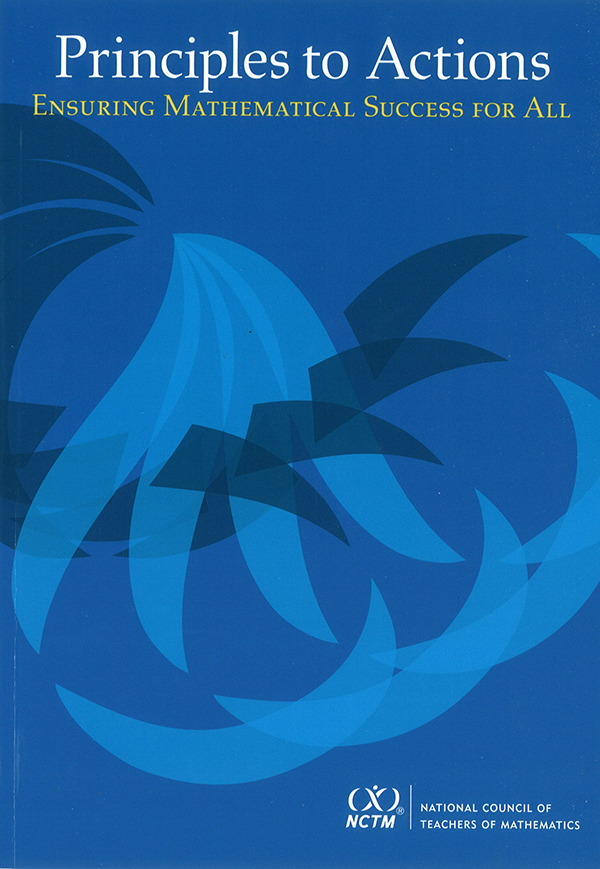 I've been interested in the Principles to Actions publication by NCTM since it came out a year ago; however, I haven't found the time to read it. So, how do you accomplish something you want to do? You set a goal. My goal is to read the Principles to Actions (PtA) book and I'm holding myself accountable by making a commitment to document my learning here through illustrations and reflections.
I've been interested in the Principles to Actions publication by NCTM since it came out a year ago; however, I haven't found the time to read it. So, how do you accomplish something you want to do? You set a goal. My goal is to read the Principles to Actions (PtA) book and I'm holding myself accountable by making a commitment to document my learning here through illustrations and reflections.NCTM has a website specifically dedicated to PtA (check it out here). I watched the video of the presentation by Dr. DeAnn Huinker at last year's NCTM Annual Conference in New Orleans. She describes and illustrates the 8 Mathematical Teaching Practices.
One of my favorite things about coaching is working with teachers to develop lessons and teach. The Leaping Lizard! lesson is a collaboration between myself and another teacher. I will use this lesson to think about the 8 Mathematical Teaching Practices. Let's look at #1.
G-CO.2 Represent transformations in the plane using, e.g., transparencies and geometry software; describe transformations as functions that take points in the plane as inputs and give other points as outputs. Compare transformations that preserve distance and angle to those that do not (e.g., translation versus horizontal stretch).
G-CO.4 Develop definitions of rotations, reflections, and translations in terms of angles, circles, perpendicular lines, parallel lines, and line segments.
We wondered what students may already know about transformations. In 8th grade, students verify the properties of the transformations (8.G.1). They also describe a sequence that exhibits a transformation (8.G.2). We anticipated students would be able to recognize the transformations and use general descriptions such as flip, turn, or slide to define them. Our goal was for students to use lines, angles, and circles to verify a transformation. We also wanted students to represent a given transformation (a skill we would continue to work on for the next few lessons).
How does this measure with the actions outlined on p. 16?
There are a number of challenges with this practice. First and foremost is time. Teachers need time to research the vertical alignment of the standard and time to discuss and refine goal. In our district this means leveraging the PLC time to focus on goals of lessons. There is also a need for quality tasks. That is Practice #2 which I will address in the next entry in this series.
- The goals are clear and articulate the mathematics that students are learning. We knew we wanted students to take the transformations beyond just a simple movement. We wanted them to understand the relationship between the image and preimage points.
- The goals fit within the learning progression. This was the first lesson in the unit. We had to build upon the 8th grade standards.
- The goals were explicitly stated throughout the lesson to focus student work. During the lesson, we had to emphasize the goal multiple times. This helped to clarify with students how we expected their understanding of transformations to extend beyond the movement. Students were to explore the properties and develop definitions.
- The goals guided the planning and decisions made during instruction. This task could be used to accomplish a variety of goals. It was critical that we have a clear understanding of student learning.

This comment has been removed by a blog administrator.
ReplyDelete